All About Belgian Malinois: Breeders, Price, Lifespan, and Distinctive Features
If you’re a fan of dogs, you have undoubtedly heard of the Belgian Malinois. This breed, majestic in its appearance and diligent in its behavior, has earned the admiration of dog enthusiasts across the globe. But what contributes to this unique charm? Why is it that Belgian Malinois are so sought-after? This article will serve as a comprehensive guide to understanding the breeders, price, lifespan, and what sets the Belgian Malinois apart.
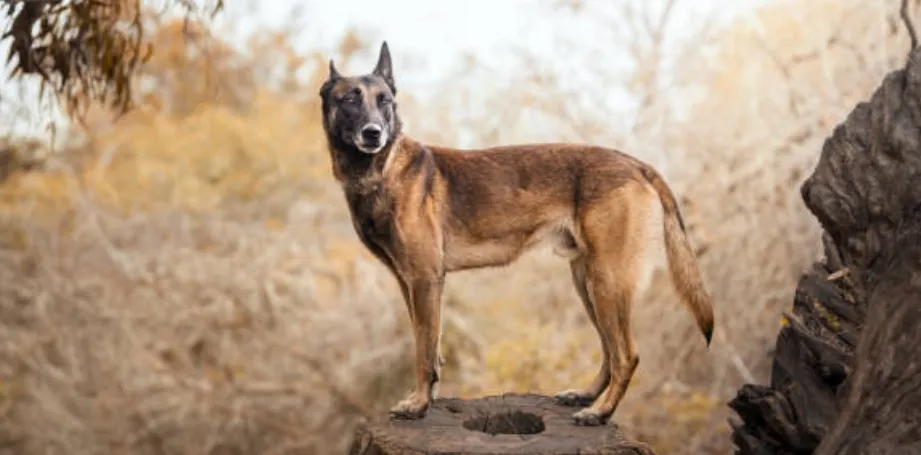
“The Belgian Malinois is a well-balanced, square dog, elegant in appearance with an exceedingly proud carriage of the head and neck. The dog is strong, agile, well-muscled, alert, and full of life.” – The American Kennel Club
An Overview: The Belgian Malinois
- The breed’s country of origin is Belgium.
- The typical life expectancy for a Belgian Malinois is between 12 to 14 years.
- The Belgian Malinois is a versatile breed, known for its trainability and hardworking nature.
- They are characteristically known for their short fawn to mahogany coat with black mask and ears.
- Besides being popular as a family pet, it has impressive roles in the area of work like police work, search and rescue, and as service dogs.
We also know that part of your fascination with Belgian Malinois might stem from not just the breed itself, but the purchase process too. Many questions can arise, such as ‘Where do I find reputable breeders?’ or ‘How much should I expect to pay?’. As we explore these facets of the Belgian Malinois, we hope to answer your questions and help demystify the breed. Let’s get started.
Quick Facts
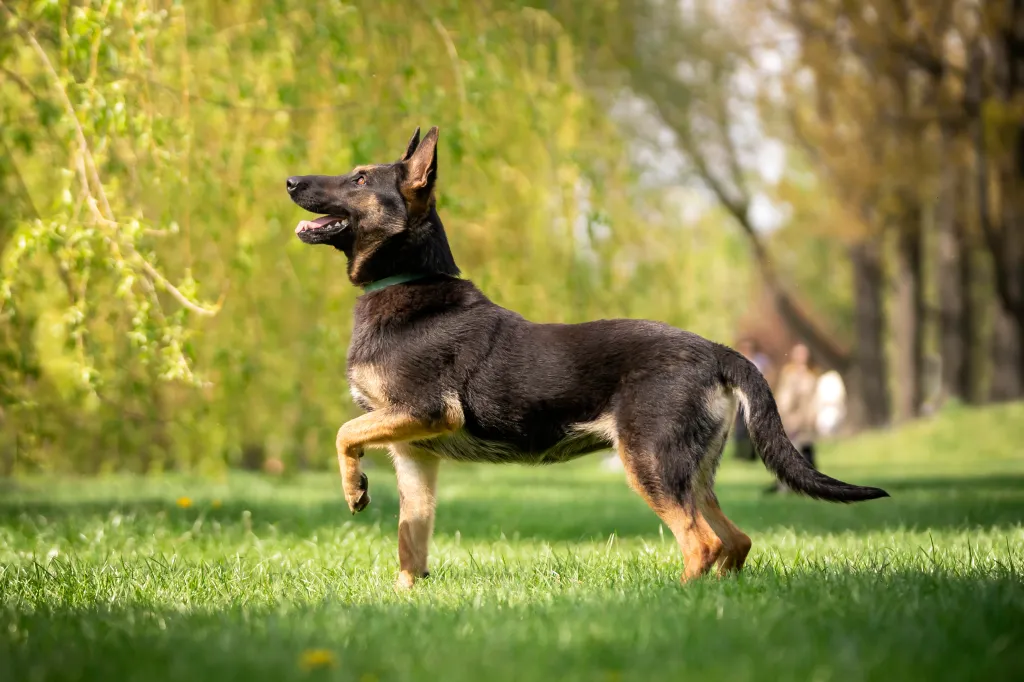
- Origin:Belgium
- Size:24-26 inches tall and 55-75 pounds, females 22-24 inches tall and 40-60 pounds
- Lifespan:12-14 years
- Coat:Short, double coat that is weather-resistant and comes in a variety of colors, including fawn, mahogany, and black
- Temperament:Intelligent, energetic, loyal, protective, trainable
- Health:Generally healthy, but can be prone to some health conditions, such as hip dysplasia, elbow dysplasia, and allergies
- Suitability as a pet:Like the other Belgian Shepherds, Belgian Malinois are best suited for active families with plenty of time to exercise and train them. They can be good with children when properly socialized, but they have a high prey drive and should not be left unsupervised with small animals.
- The Belgian Malinois is one of the four Belgian Shepherd varieties, the others being the Belgian Groenendael, the Belgian Tervueren, and the Belgian Laekenois.
- The Belgian Malinois is heavily featured in the “John Wick” franchise.
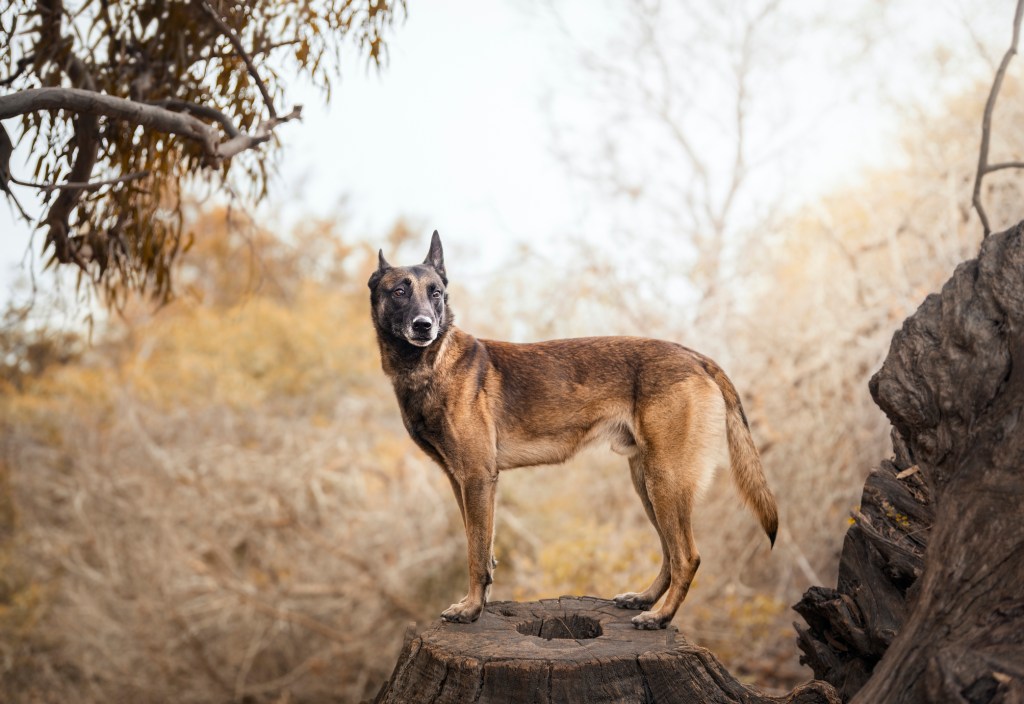
Adaptability
★ ★ ★ ★ ★
All-around friendliness
★ ★ ★ ★ ★
Health And Grooming Needs
★ ★ ★ ★ ★
Trainability
★ ★ ★ ★ ★
Exercise needs
★ ★ ★ ★ ★
Belgian Malinois Overview
The Belgian Malinois is a mid-sized breed, often mistaken for a German Shepherd due to its similar appearance. Recognized for its short, fawn-colored coat and distinguishing black mask, the Belgian Malinois ranks as one of the four Belgian shepherd dogs. The U.S. acknowledged the Malinois as a distinct breed in 1959.
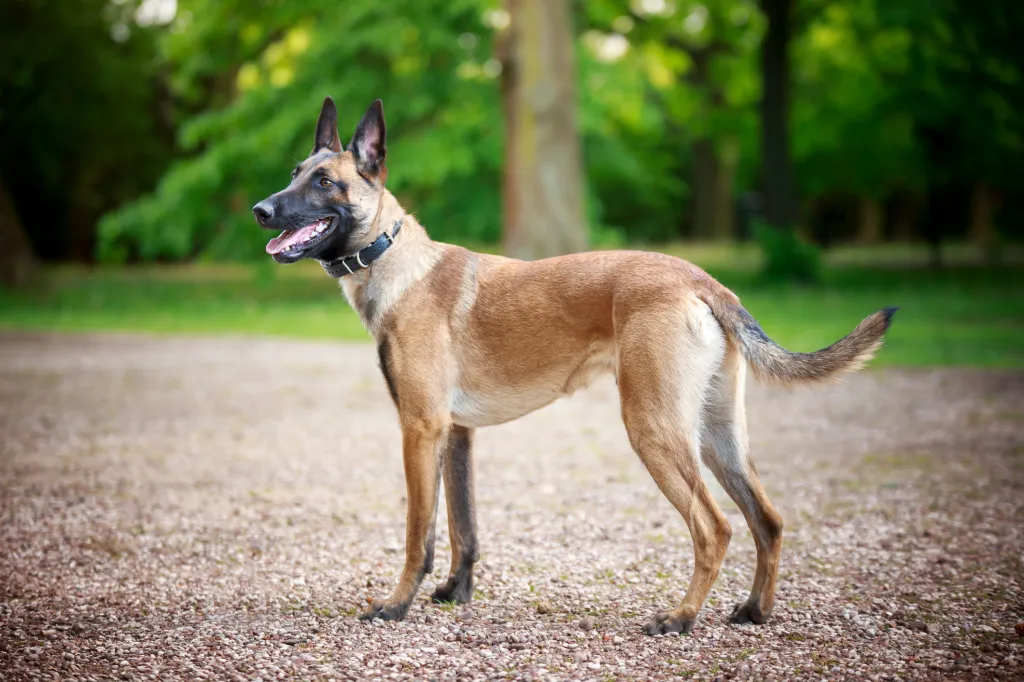
Originally from Malines in Belgium, the Malinois possesses impressive stamina along with an innate desire to work. Known as intelligent and extremely active dogs, Malinois are adept at an array of tasks. Their skill set extends beyond herding to include police work, search and rescue missions, and canine performance events, such as agility.
It’s easy to mistake the Belgian Malinois for a German Shepherd due to their similar appearances. However, upon closer examination, one can notice significant differences between these two breeds. The Malinois, for example, is a smaller dog with a lighter bone structure. They proudly carry their weight on their toes, giving them a notable square body profile, unlike the German Shepherd which has a distinguishable long, sloping back.
Color also distinguishes these two breeds. Malinois colors range from fawn, red to brown, with black-tipped hairs. On the other hand, German Shepherds typically sport a tan shade with a black saddle. Also, the Malinois possesses a more finely shaped, chiseled head with smaller, more triangular ears compared to its German counterpart.
When it comes to behavior, many argue that Malinois are more alert and swift in their responses than German Shepherds. They’re also particularly sensitive animals requiring gentle yet strategic training approaches. Their temperament varies with some being friendly and assertive, while others show reservations around strangers. Despite these variations, they should never exhibit fearful or aggressive behavior.
The Belgian Malinois is a spirited and intense canine. The breed requires robust training and socialization from pet parents who have experience with dogs. These ever-energetic creatures aren’t ideal for individuals with long work hours or frequent travel schedules.
If you’re set on welcoming a Malinois into your family, early socialization is imperative. Introduce your pup to an assortment of individuals, animals, and diverse environments. Enrolling your Malinois puppy in kindergarten classes, followed by taking advantage of obedience training, is highly encouraged. Malinois are quick to learn and thrive off doing tasks assigned by their guardians. Everything from obedience to tracking, agility, herding, and Schutzhund comes naturally to them due to their robust “play drive”.
However, it’s crucial to remember that Malinois were bred for herding and protection. Dogs that have not been adequately socialized may exhibit aggressive behavior due to fear or shyness. Notably, while well-socialized Malinois are usually good with children they’ve grown up with, they may instinctively attempt to herd them during playtime by nipping at their heels.
Belgian Malinois Highlights
- Herding Instinct: Belgian Malinois were originally bred for herding sheep and have a strong herding instinct. They are known for their agility and quick movements.
- Intelligence: Belgian Malinois are highly intelligent dogs. They are quick learners and are often used in various roles such as police work, search and rescue, and as service dogs.
- Energetic and Agile: These dogs are known for their high energy levels and agility. They require regular exercise and mental stimulation to keep them happy and healthy.
- Loyal and Protective: Belgian Malinois are known for their loyalty to their families. They can also be protective, making them good guard dogs.
- Trainability: Due to their intelligence and eagerness to please, Belgian Malinois are highly trainable. They excel in obedience training and can learn commands quickly.
- Work Ethic: Belgian Malinois have a strong work ethic, and they thrive when given a job or task to do. This makes them well-suited for various working roles, including police and military work.
- Appearance: They have a sleek and athletic build with a short coat that can be fawn to mahogany in color. They typically have a black mask and ears.
- Versatility: In addition to their traditional roles as herding dogs, Belgian Malinois are employed in various roles such as police work, search and rescue, detection work, and as service dogs. Their versatility makes them well-suited for a range of tasks.
Belgian Malinois History
The Belgian Malinois is one of four types of Belgian Sheepdogs, all of which were developed in Belgium towards the end of the 1800s. These canines fall into four categories: the Malinois, the Tervuren, the Laekenois, and the Groenendael, each with distinctive coat color and length.
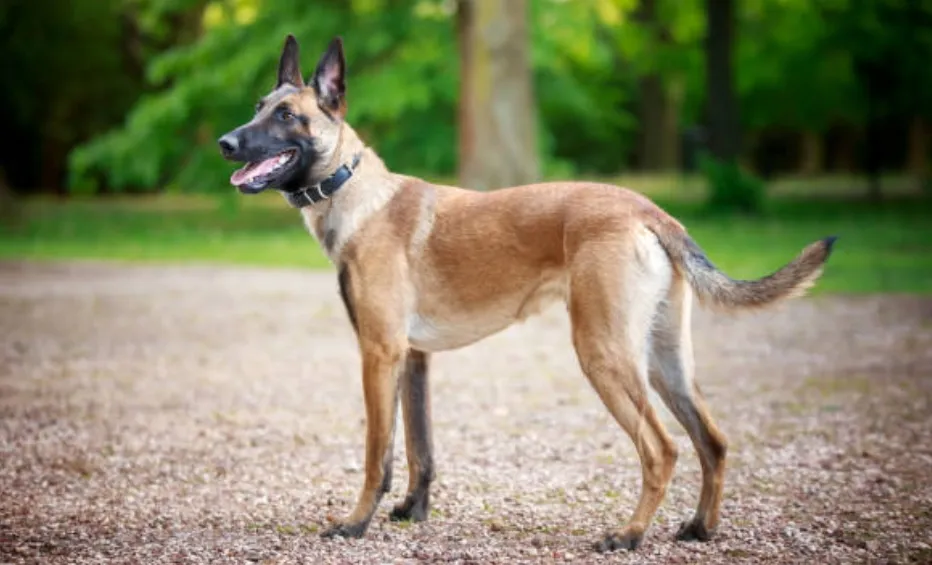
In the United States, the American Kennel Club (AKC) has officially recognized all breeds except the Laekenois, while the United Kennel Club acknowledges all four as the same breed. It was back in 1891 that the Club du Chien de Berger Belge (Belgian Shepherd Dog Club) was founded to determine the unique characteristics of Belgian shepherd dogs.
After much research and evaluation, the conclusion was that the shepherd dogs native to Belgium were medium-sized, square-shaped, with dark brown eyes and set triangular ears. The main differences among them lay in the texture, color, and length of their coats. This patterns was found consistent across various regions of the country.
The Belgian Shepherd Dog was formally recognized as a distinct breed in 1901, this was based on the standard written by Professor Reul in 1892, which defined three varieties of the breed: long-coated, short-coated, and rough-coated.
The origin of the Belgian Malinois goes back to a shepherd named Adrien Janssens from Laeken. In 1885, Janssens bought a fawn rough-haired dog named Vos I, or Vos de Laeken, from a local cattle dealer. He not only used Vos I for herding his flock but also bred him. This started with Lise, a short-haired, brindle-brown dog. Later Vos I was bred with his daughters, creating a uniform line of dogs with similar characteristics. Today, these dogs are recognized as the ancestors of several breeds, including the Belgian Shepherd Dogs, Bouvier des Flandres, and Dutch Shepherd Dogs.
In 1898, a club was launched in the city of Malines aimed at promoting the fawn short-haired Belgian Shepherd dog. With the significant contribution of Louis Huyghebaert, an early breeder, author, and judge, the popularity of the short-haired breed increased and it acquired its present name ‘Malinois’. It’s interesting to note that the formation of the Malines club was based on Huyghebaert’s proposal. According to him, due to the decreased number of sheep in Belgium, the shepherd dogs required field trials that demonstrated their distinct qualities of intelligence, and loyalty.
Following his suggestion, dressage trials were initiated which allowed dogs to showcase their skills in obedience and agility. It’s worth noting that the inaugural dressage trial, hosted on July 12, 1903, in Malines, was won by a Malinois named Cora van’t Optewel, owned by M. van Opdebeek.
The Belgian Shepherd Dog, also known as the Belgian Malinois, played multiple roles in its early development. Belgian authorities first used these dogs for tasks like guarding and pulling carts. As their reputation for reliability grew, they became popular at European police dog trials before World War II, winning numerous awards. During World War I, Belgian Shepherd Dogs served in varied roles such as messengers, Red Cross assistants, ambulance cart dogs, and reportedly, even as light machine-gun cart dogs.
Belgium saw the emergence of several exceptional Malinois kennels in the 1920s and 1930s. At the beginning of the twentieth century, the Malinois along with the Groenendael, another variety of Belgian Shepherd dogs, were much sought after for exports to numerous countries including the Netherlands, France, Switzerland, Canada, the US, Argentina, and Brazil.
The American Kennel Club (AKC) originally registered two Groenendael and two Malinois as “German Sheepdogs” in 1911. However, the name was changed to “Belgian Sheepdogs” two years later in 1913. The first American importers of these dogs were Josse Hanssens of Norwalk, Connecticut, who subsequently sold the two Malinois to L.I. De Winter of Guttenberg, New Jersey. Multiple litters of the Malinois were born under De Winter’s kennel name, Winterview.
The Belgian Malinois, along with other Belgian Shepherd Dogs, were brought to America by servicemen post-World War I. This led to a surge in registrations with the American Kennel Club (AKC). In fact, the first ever Belgian Sheepdog Club of America was formed in 1924, and it quickly became an AKC member club. Walter Mucklow, a Florida-based attorney, played a significant role in promoting the breed through his writing in AKC Gazette articles. Additionally, he bred these dogs under the banner of Castlehead Kennel. As the 1920s wrapped up, the Belgian Malinois and its cousin the Groenendael, were among the top five most popular breeds.
However, the Great Depression marked a dark period for dog breeding, with most people unable to afford it causing the first Belgian Sheepdog Club of America to dissolve. During this time, registrations for Malinois with the AKC were few and far between. Post depression, the interest in Malinois had so drastically diminished that the AKC classified them under the Miscellaneous Class in shows during the 30s and 40s. But in 1949, things took a turn for the better when a second Belgian Sheepdog Club of America was formed in Indiana. In the same year, an enthusiast named John Cowley imported two Malinois, laying the foundation for his Netherlair kennel. He showcased several of his dogs, which reignited public interest in the breed.
The popularity of the Belgian Malinois rose during the 1960s, with more individuals participating in breeding and showcasing activities. The breed received significant recognition in 1992 when the American Belgian Malinois Club became an AKC-parent club. Over the years, the breed has gained wide attention for their exceptional service in various sectors such as the military, drug detection agencies, search and rescue operations, and police forces. This has led to an increase in the import of Malinois to the U.S. An exceptional instance of their service is the story of Conan, a Belgian Malinois, who played a pivotal role in a successful military operation against the Islamic State leader, Abu Bakr al-Baghdadi in 2019. After making a complete recovery from injuries sustained during the operation, Conan was celebrated as a hero at The White House.

Belgian Malinois Size
Males are 24 to 26 inches tall at the shoulder and weigh 60 to 80 pounds. Females are 22 to 24 inches tall and weigh 40 to 60 pounds.
Belgian Malinois Personality
The Belgian Malinois is a lively and curious breed. They are excellent family dogs, showing affection towards family members, while being cautious with strangers. Given their strong protective instincts, they are superb watchdogs, guarding their people and property diligently yet sensibly. They are typically neither shy nor aggressive.
However, a dog’s temperament is greatly influenced by factors such as genetics, training, and socialization. It’s important to start early with socializing your Malinois puppy to develop a well-rounded adult dog. This can be achieved through exposing them to a variety of people, environments, sounds, and experiences. Puppy kindergarten classes are a great starting point. Regularly inviting guests to your home and taking your puppy to bustling parks, dog-friendly stores, or for walks in the neighborhood can further enhance their social skills.
Belgian Malinois Health
Belgian Malinois are generally healthy, but like all breeds, they’re prone to certain health conditions. Not all Malinois will get any or all of these diseases, but it’s important to be aware of them if you’re considering this breed.
- Hip Dysplasia: This is a heritable condition in which the thighbone doesn’t fit snugly into the hip joint. Some dogs show pain and lameness on one or both rear legs, but you may not notice any signs of discomfort in a dog with hip dysplasia. As the dog ages, arthritis can develop. X-ray screening for hip dysplasia is done by the Orthopedic Foundation for Animals or the University of Pennsylvania Hip Improvement Program (PennHIP). Hip dysplasia is hereditary, but it can also be triggered by environmental factors, such as rapid growth from a high-calorie diet or injuries incurred from jumping or falling on slick floors.
- Progressive Retinal Atrophy (PRA). This is a degenerative eye disorder that eventually causes blindness from the loss of photoreceptors at the back of the eye. PRA is detectable years before the dog shows any signs of blindness. Fortunately, dogs can use their other senses to compensate for blindness, and a blind dog can live a full and happy life. Just don’t make it a habit to move the furniture around.
- Elbow Dysplasia. This is a heritable condition common to large-breed dogs. It’s thought to be caused by different growth rates of the three bones that make up the dog’s elbow, causing joint laxity. This can lead to painful lameness. Your vet may recommend surgery to correct the problem or medication to control the pain.
- Anesthesia Sensitivity. Belgian Malinois are very sensitive to anesthesia. They have a higher-than-average rate of death when put under anesthesia because of their muscle-to-fat ratio. Be sure your vet understands this sensitivity before allowing your Malinois to have surgery or even have their teeth cleaned.
Belgian Malinois Care
Belgian Malinois thrive in smaller spaces as long as they receive ample exercise. They are adjustable to varying climates, though they do fancy the cooler temperatures. Always remember, Malinois are family dogs and they belong indoors. Give them a chance to roam free in a secure area if you can, complemented by long walks or a nice jog. They are high-energy, needing about 20 minutes of play or activity several times each day. Their enthusiasm will match yours, especially if you love outdoor activities like hiking or running.

Thinking about training your dog in obedience or agility activities? Good idea! As long as your Belgian Malinois stays active, they’re happy—even if that means running big circles in your backyard, a cute nod to their herding instincts.
The exercise needs of Malinois puppies are different. From 9 weeks to 4 months old, engaging them in puppy kindergarten or playtime in the yard can be beneficial. Between 4 to 6 months, weekly obedience classes, daily walks, and yard play should suffice. From 6 months up to a year, introducing them to fetch with a ball or Frisbee is a good idea. Continue walking no longer than half a mile and avoid harsh surfaces. As your Malinois pup grows older, you can gradually increase the exercise intensity and distance, keeping their overall health in mind.
Malinois are sensitive and highly trainable. Be firm, calm, and consistent with them. Anger and physical force are counterproductive.
Belgian Malinois Feeding
Recommended daily amount: 2 to 3 cups of high-quality dry food a day, divided into two meals.
How much your adult dog eats depends on their size, age, build, metabolism, and activity level. Dogs are individuals, just like people, and they don’t all need the same amount of food. It almost goes without saying that a highly active dog will need more than a couch potato dog.
The quality of dog food you buy also makes a difference. The better the dog food, the further it will go toward nourishing your dog.
If you’re unsure whether they’re overweight, give them the eye test and the hands-on test. First, look down at them. You should be able to see a waist. Then place your hands on their back, thumbs along the spine, with the fingers spread downward. You should be able to feel but not see their ribs without having to press hard. If you can’t, they need less food and more exercise.
Belgian Malinois Coat Color And Grooming
Malinois have short, straight hair that feels hard to the touch. The hard topcoat and dense undercoat provide weather resistance for a dog who was bred to work outdoors in all conditions. The hair is slightly longer around the neck, forming a sort of mini-mane. The coat is typically fawn- to mahogany-colored with a black mask on the face, black ears, and black tips on the hairs. Fawn-colored Malinois sometimes have a tiny bit of white on the tips of their toes or a small white spot on the chest.
The short, smooth coat of the Malinois is easy to groom. Brush it weekly with a firm bristle brush, and bathe only when necessary. Malinois shed year-round, more heavily in the spring and fall. Brush your Malinois’ teeth at least two or three times a week to remove tartar buildup and bacteria. Daily brushing is even better if you want to prevent gum disease and bad breath. Trim nails regularly if your dog doesn’t wear them down naturally. If you can hear them clicking on the floor, they’re too long. Short, neatly trimmed nails keep the dog’s feet in good condition and keep your legs from getting scratched when your Malinois enthusiastically jumps up to greet you.
Begin getting your Malinois used to being brushed and examined when they’re a puppy. Handle their paws frequently (dogs are touchy about their feet) and look inside their mouth and ears. Make grooming a positive experience filled with praise and rewards, and you’ll lay the groundwork for easy veterinary exams and handling when they’re an adult.
As you groom, check for sores, rashes, or signs of infection such as redness, tenderness, or inflammation on the skin, in the nose, mouth, and eyes, and on the feet. Eyes should be clear, with no redness or discharge. Your careful weekly exam will help you spot potential health problems early.
Belgian Malinois Children And Other Pets
Well-socialized Malinois are good with children, especially if they are raised with them, but because of their herding heritage, they may have a tendency to nip at their heels and try to herd them when playing. You must teach your Malinois that this behavior is unacceptable. An adult Malinois who’s unfamiliar with children may do best in a home with children who are mature enough to interact with them properly.
Always teach children how to approach and touch dogs, and always supervise any interactions between dogs and young children to prevent any biting or ear or tail pulling on the part of either party. Teach your child never to approach any dog while they’re eating or to try to take the dog’s food away. No dog should ever be left unsupervised with a child.
Malinois can be aggressive toward other dogs and cats unless they’re brought up with them from puppyhood. If you want your Malinois to get along with other animals you must start early and reward them for appropriate behavior. If your Malinois hasn’t been socialized to other animals, it’s your responsibility to keep your dog under control in their presence.
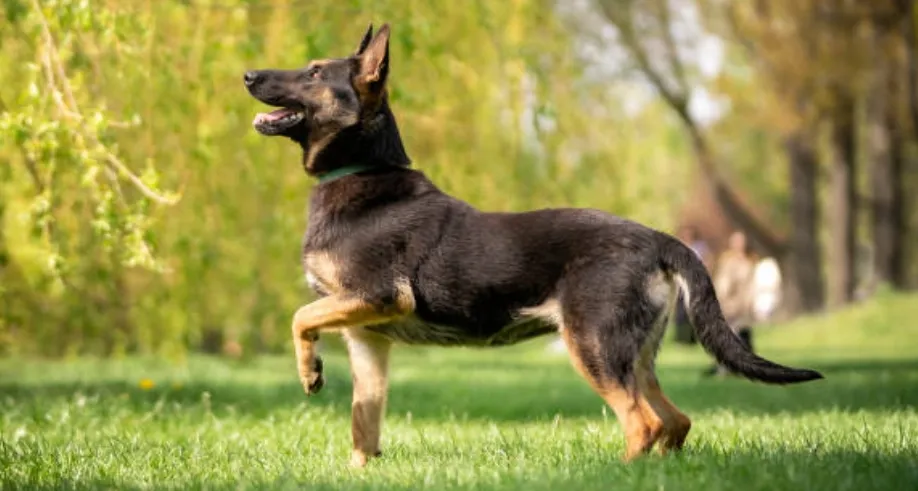
Belgian Malinois Rescue Groups
Belgian Malinois are often adopted without any clear understanding of what goes into owning one. There are many Malinois in need of adoption and or fostering.
The ABMC Belgian Malinois Rescue is a good place to start if you are interested in adopting or fostering a rescue Belgian Malinois.
Belgian Malinois Breed Organizations
Choosing a trusted dog breeder is a significant factor when you’re looking to add a new canine member to your family. These breeders prioritize the health and social upbringing of their puppies, ensuring they grow to be well-balanced companions. They perform health screenings on their breeding dogs and provide early socialization for the puppies, along with lifelong support for you.
Conversely, backyard breeders, often driven by profit, may not adhere to these quality standards. They might overlook health screenings and adequate puppy socialization, leading to dogs with more health and behavioral issues down the line.